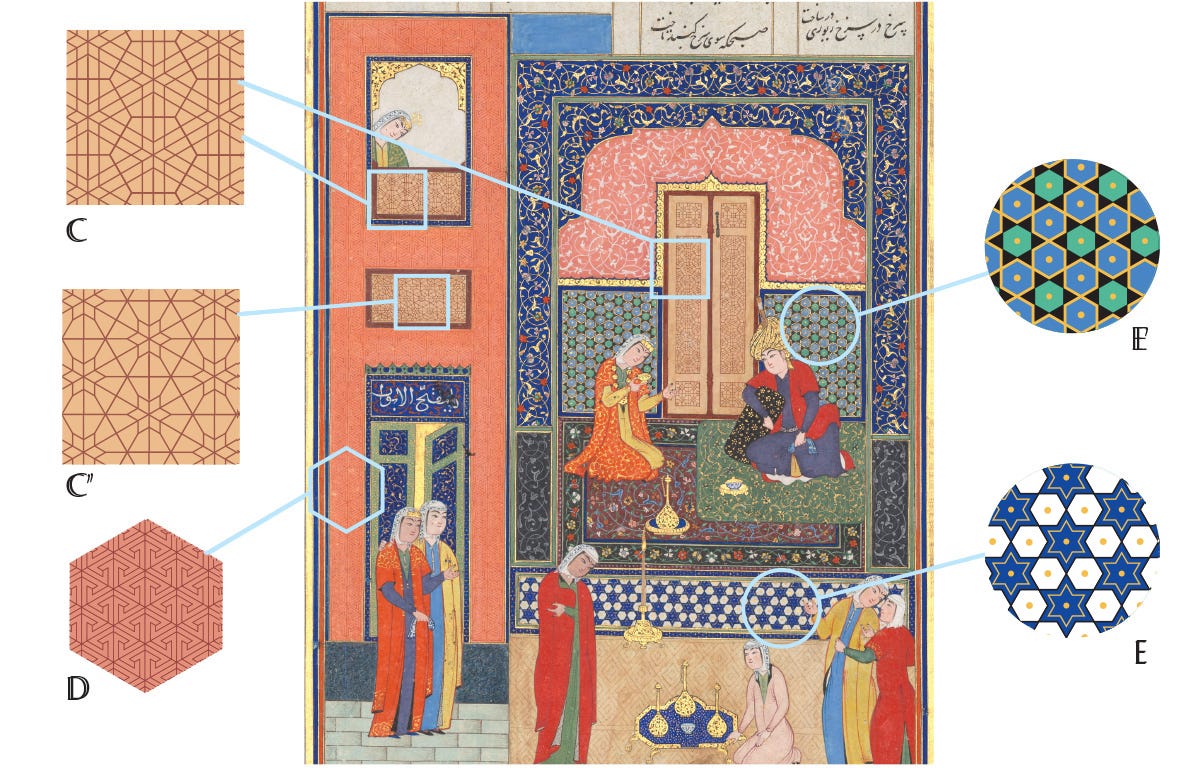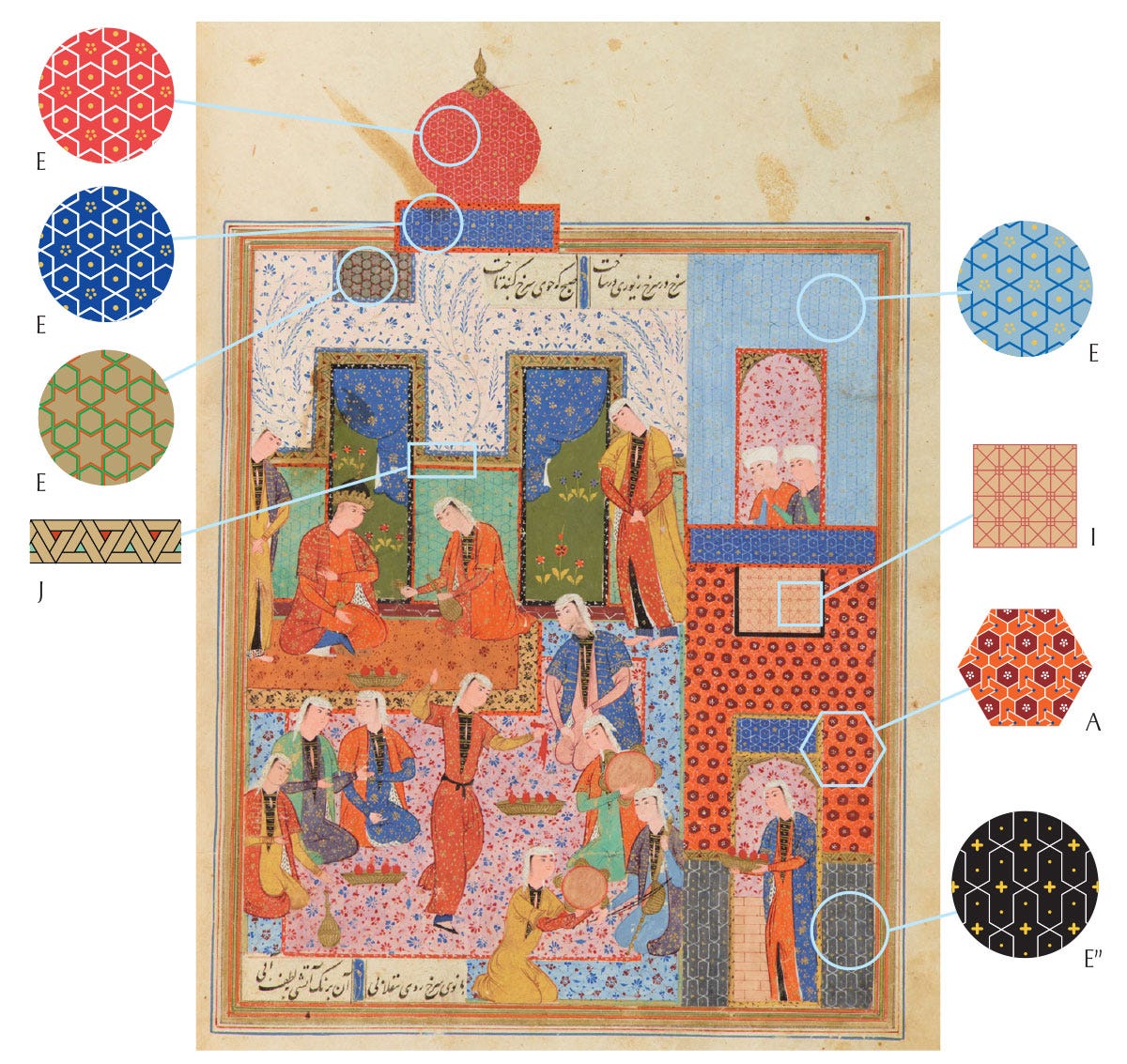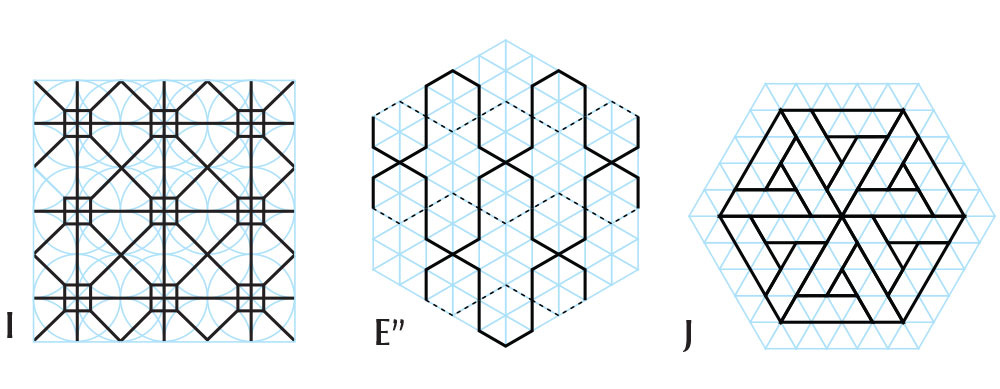It’s been a while but we’re continuing to look at the details of six series of artworks that were inspired by Haft Peykar, the epic poem that tells of Shah Bahram and his seven brides. I gave a lengthier introduction to it in part 1 (Patterns under the Black Dome) and described how this romantic epic is also a barely veiled tale of initiation. Part 2 took place under the Yellow Dome, part 3 under the Green Dome.
Here are now the images1 for the third stage of Bahram’s journey. Each is linked to its source page where you can zoom in on the fine details. You might want to read this post in a browser rather than email, so you can see the enlarged images.
The Red Dome
On Tuesday, Bahram visits Nasrīn-Nōsh, Princess of the Slavs, clad in Red, under the sign of Mars, Lord of Iron.

This manuscript continues to use two patterns derived from a grid of triangles and playing with the outlines (or absence thereof) to make them feel new each time.
Since my last post on this topic, I learned an important detail about process: the artists had at their disposal templates for the grids, that could be slipped behind a page and serve as a guide for them to paint the variants we see. I don’t have more details of when and where right now, as I’ve been too snowed under to chase it up, but this very clever device explains how freestyled patterns can be so regular. Inversely, it’s easy to spot when no such template was used.
The Met manuscript patterns continue along the same lines as previously, though both E patterns are made a little more complex by adding a hexagon or the outline of a hexagram inside the hexagrams, as was originally done for the Black Dome illustration.

Can we appreciate the splendid reds and oranges used at full strength for this pavilion? I don’t think they can be anything other than vermilion and minium (red lead), and this really would be the first time I see the latter, which is a garish orange, used to such wonderful effect.
The patterns themselves continue to be iterations on the same basis.
The unusual pattern that is H below, is clearly a signature of this manuscript’s artist. So far we haven’t seen it anywhere else.

As for Cambridge, other than the super-classic E which is still uses in as many colour combinations as possible, it only has the exact three others we saw under the Green Dome.

While this manuscript has stuck to just the one grid for the dome, based on squares, it has made very clever use of it with minimal alterations. This particular variant is really unusual and I wonder what they’ll be coming up with next.
The Red Dome was the middle point of Bahram’s story, to be continued under the Turquoise Dome…
The sources of these images are the following manuscripts, from the oldest to the newest:
Chester Beatty Library, Per 171 (AD 1492, AH 897), unknown artist.
Metropolitan Museum of Art, 13.228.7.8 (AD 1524, AH 931), painted by Shaikh Zada.
Smithsonian National Museum of Asian Art, F1908.271 to 277 (AD 1548, AH 955), unknown artist
Bibliothèque Nationale de France, Départment des Manuscrits, Supplément Persan 1956 (AD 1560, AH 965), unknown artist
Cambridge University Library, MS Add.3139 (17th c. AD, 11th c. AH), unknown artist.
British Library, Add MS 6613, ff138v-196r (AD 1671, AH 1076), painted by Ṭālib Lālā.


















Thank you for your interesting posts and bellyful images and patterns! All from a place and tradition not well known where I'm from. But I have visited and been dazzled by the amazing designs in mosques both in Iran and Pakistan.
One short question. I've searched through your post to se if you are using any software for reconstructing the patterns. Symmetries can quite easily be done by programing.